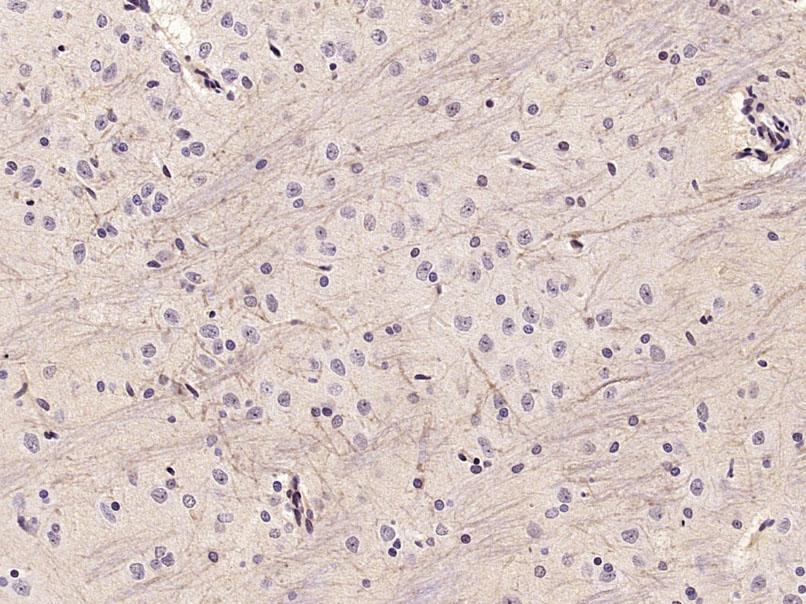
Rabbit Anti-KCNMA1/BK channel antibody
Maxi Potassium channel alpha; bA205K10.1; BK channel; BKCa channels; BKCA alpha; BKCA alpha subunit; BKTM; Calcium activated potassium channel subfamily M subunit alpha 1; Calcium activated potassium channel subunit alpha 1; DKFZp686K1437; Drosophila slow
View History [Clear]
Details
Product Name KCNMA1/BK channel Chinese Name 钙激活钾Channel protein α 1抗体 Alias Maxi Potassium channel alpha; bA205K10.1; BK channel; BKCa channels; BKCA alpha; BKCA alpha subunit; BKTM; Calcium activated potassium channel subfamily M subunit alpha 1; Calcium activated potassium channel subunit alpha 1; DKFZp686K1437; Drosophila slowpoke like; hSlo; K(VCA)alpha; KCa1.1; KCNMA 1; KCNMA; KCNMA1; Large conductance calcium activated potassium channel subfamily M alpha member 1; Maxi K; Maxi K channel; MaxiK; Potassium large conductance calcium activated channel subfamily M alpha member 1; SAKCA; Slo 1; SLO alpha; SLO; Slo homolog; Slo1; Slowpoke homolog; Stretch activated Kca channel; KCMA1_HUMAN. Research Area Channel protein Immunogen Species Rabbit Clonality Polyclonal React Species Human, Rat, (predicted: Mouse, Dog, Pig, Cow, Horse, Rabbit, Sheep, ) Applications IHC-P=1:100-500 IHC-F=1:100-500 (Paraffin sections need antigen repair)
not yet tested in other applications.
optimal dilutions/concentrations should be determined by the end user.Theoretical molecular weight 137kDa Cellular localization The cell membrane Form Liquid Concentration 1mg/ml immunogen KLH conjugated synthetic peptide derived from human BK channel: 1151-1236/1236 <Cytoplasmic> Lsotype IgG Purification affinity purified by Protein A Buffer Solution 0.01M TBS(pH7.4) with 1% BSA, 0.03% Proclin300 and 50% Glycerol. Storage Shipped at 4℃. Store at -20 °C for one year. Avoid repeated freeze/thaw cycles. Attention This product as supplied is intended for research use only, not for use in human, therapeutic or diagnostic applications. PubMed PubMed Product Detail MaxiK channels are large conductance, voltage and calcium-sensitive potassium channels which are fundamental to the control of smooth muscle tone and neuronal excitability. MaxiK channels can be formed by 2 subunits: the pore-forming alpha subunit, which is the product of this gene, and the modulatory beta subunit. Intracellular calcium regulates the physical association between the alpha and beta subunits. Alternatively spliced transcript variants encoding different isoforms have been identified. [provided by RefSeq, Jul 2008].
Function:
Potassium channel activated by both membrane depolarization or increase in cytosolic Ca(2+) that mediates export of K(+). It is also activated by the concentration of cytosolic Mg(2+). Its activation dampens the excitatory events that elevate the cytosolic Ca(2+) concentration and/or depolarize the cell membrane. It therefore contributes to repolarization of the membrane potential. Plays a key role in controlling excitability in a number of systems, such as regulation of the contraction of smooth muscle, the tuning of hair cells in the cochlea, regulation of transmitter release, and innate immunity. In smooth muscles, its activation by high level of Ca(2+), caused by ryanodine receptors in the sarcoplasmic reticulum, regulates the membrane potential. In cochlea cells, its number and kinetic properties partly determine the characteristic frequency of each hair cell and thereby helps to establish a tonotopic map. Kinetics of KCNMA1 channels are determined by alternative splicing, phosphorylation status and its combination with modulating beta subunits. Highly sensitive to both iberiotoxin (IbTx) and charybdotoxin (CTX).
Subunit:
Homotetramer.
Subcellular Location:
Membrane; Multi-pass membrane protein.
Tissue Specificity:
Widely expressed. Except in myocytes, it is almost ubiquitously expressed.
Post-translational modifications:
Phosphorylated (Probable). Phosphorylation by kinases such as PKA and/or PKG. In smooth muscles, phosphorylation affects its activity.
DISEASE:
Defects in KCNMA1 are the cause of generalized epilepsy and paroxysmal dyskinesia (GEPD) [MIM:609446]. Epilepsy is one of the most common and debilitating neurological disorders. Paroxysmal dyskinesias are neurological disorders characterized by sudden, unpredictable, disabling attacks of involuntary movement often requiring life-long treatment. The coexistence of epilepsy and paroxysmal dyskinesia in the same individual or family is an increasingly recognized phenomenon. Patients manifest absence seizures, generalized tonic-clonic seizures, paroxysmal nonkinesigenic dyskinesia, involuntary dystonic or choreiform movements. Onset is usually in childhood and patients may have seizures only, dyskinesia only, or both.
Similarity:
Belongs to the potassium channel family. Calcium-activated (TC 1.A.1.3) subfamily. KCa1.1/KCNMA1 sub-subfamily.
Contains 1 RCK N-terminal domain.
SWISS:
Q12791
Gene ID:
3778
Database links:Entrez Gene: 3778 Human
Entrez Gene: 16531 Mouse
Omim: 600150 Human
SwissProt: Q12791 Human
SwissProt: Q08460 Mouse
Unigene: 144795 Human
Unigene: 343607 Mouse
Unigene: 486347 Mouse
Unigene: 30616 Rat
Channel protein(Channel Protein)Product Picture
Bought notes(bought amounts latest0)
No one bought this product
User Comment(Total0User Comment Num)
- No comment



 +86 571 56623320
+86 571 56623320
 +86 18668110335
+86 18668110335

